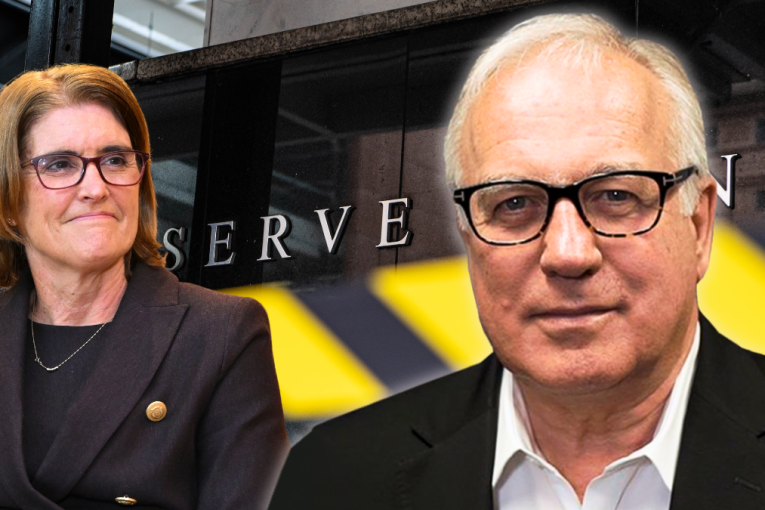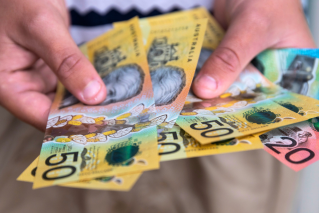Refinancing with cash back could be worth it. Here’s how the maths stack up


Increased competition between lenders means some cash back deals are worth considering. Photo: Getty
Home owners could save more than a thousand dollars over two years by refinancing to a loan that offers a cash sweetener.
Usually these deals come with steep interest rates, but RateCity research director Sally Tindall said increased competition between the big banks and smaller home lenders was throwing up some great offers.
“Over the last couple of years and particularly this year, we’ve seen cash-back deals near the lowest rates on the market,” Ms Tindall told TND.
“Banks, big and small, are fiercely competitive in the fixed rate market.”
New RateCity analysis found that 21 lenders are offering up to $5000 in cash to those who refinance their loans on fixed rates as low as 1.84 per cent.
That’s close to the lowest fixed rate available, which is 1.77 per cent, and it means you could save up to $1695, depending on the size of your mortgage.
It’s not exactly straightforward to work out whether a cash-back deal is a good idea for you, though. It comes down to your personal circumstances.
But with that in mind, let’s run through the deals and how to do the maths.
Fixed rate refinancing: Save up to $1695
The first step is to find the best loan deals on the market.
The key number to look for is the interest rate you’ll be paying, which is the most important factor to consider.
“If you go for the cash back deal just for the sweetener, it could end up shooting you in the foot,” Ms Tindall said.
Nevertheless, RateCity found that people with a $500,000 mortgage can save money by moving to the best fixed rate home loan deals that offer cash back on top.
The lowest two-year fixed rate available right now is 1.79 per cent, but 17 lenders with higher rates have cheaper deals if you take into account their cash-back offers.
Someone switching from an average variable rate to the best fixed loan with cash back could save $14,200 over two years.
That is $1695 more than would be saved by switching to the lowest fixed rate deal on the market, which doesn’t offer cash back.
Variable rate refinancing
The cash-back deals are less competitive among variable rates.
Just two cash-back deals offer greater savings than the lowest variable rate currently on the market over two years.
The best variable rate is currently 1.77 per cent, and the most you could save on a higher variable rate with cash back is $102 over two years.
Over three years, no cash back deals are cheaper than the lowest variable rate offer.
Run those numbers
Now you know what the best rates are, the second step is comparing these deals to your current home loan.
The bottom line is you’re going to need to do the maths and work out if a fixed rate deal with cash back is going to save you money. Relevant factors include your loan balance, the interest rate, and bonuses (like cash back) attached to refinancing your loan.
ASIC’s Moneysmart website has a handy calculator that can run the numbers for you if you put in those key pieces of information.
Plug your current loan terms into the calculator and then add in the terms associated with the deals above and compare the two.
Don’t forget to add fees such as broker charges and bank costs.
And then add in whatever cash back you’re eligible for under the deal.
You should only consider refinancing if you’ll be paying less over the course of your loan under the new deal when factoring in all the costs.
Now, proceed with caution
Ms Tindall advises caution when doing your own refinancing maths.
She said it’s easy to fall into traps when weighing up cash-back deals.
“If you have a million dollar loan, it comes out differently because the bigger your loan the more important the interest rate is,” Ms Tindall said.
You also need to make sure you understand your revert rates.
Fixed rate home loans become much more expensive after their fixed terms expire, meaning you could end up losing more money than you save by switching.
The good news is you can avoid this if you plan to refinance again in a few years.
“Don’t set and forget your loan,” Ms Tindall said.
Equity and loan flexibility
After you’ve done the maths, the next step involves checking off some other important considerations, including:
- How much of your home you own (your equity)
- Features and restrictions on your current and prospective loan.
If you own less than 20 per cent of your home, you need to take out lenders mortgage insurance to refinance.
“That can run into the thousands,” Ms Tindall said.
You’ll be able to negotiate a better deal if you own more of your home.
House prices are rising right now, so consider getting an evaluation as it could increase your borrowing power. Also consider if a fixed rate loan is right for you in the first place. They are usually more restrictive than variable loans.
For example, few fixed rate loans come with offset accounts.
So if you’re someone who uses an offset account to reduce your total repayments, then you could end up paying more or saving less.
And Ms Tindall noted that there are also repayment caps to consider as well.
“If you have spare money there’s a limit on how far ahead you can get in your fixed rate period,” she explained.








